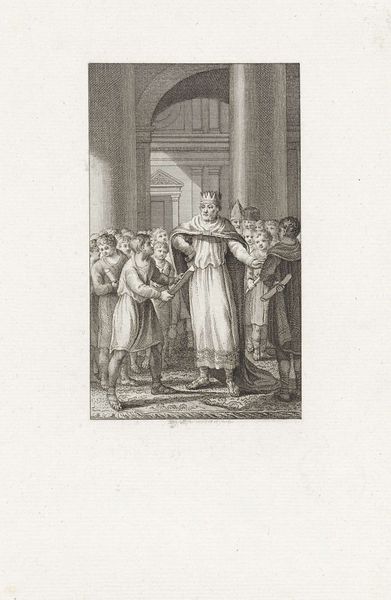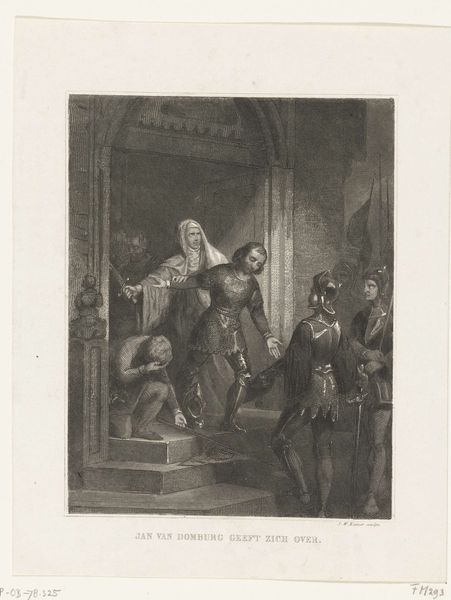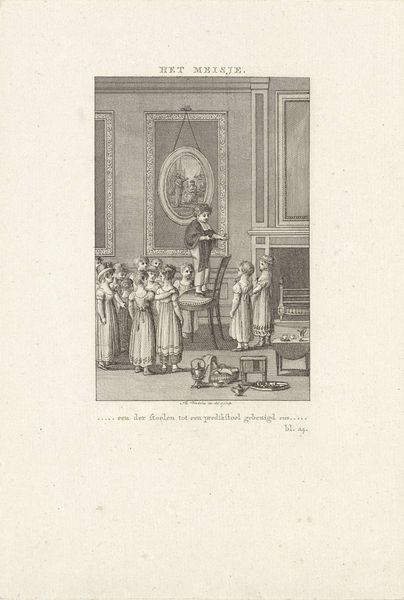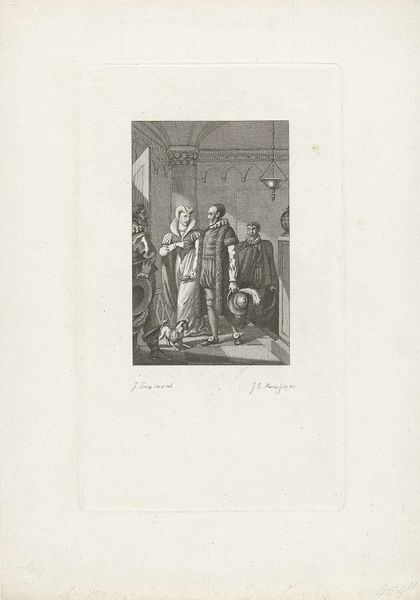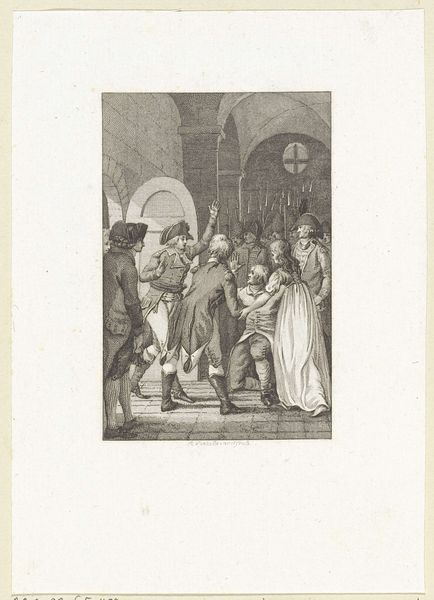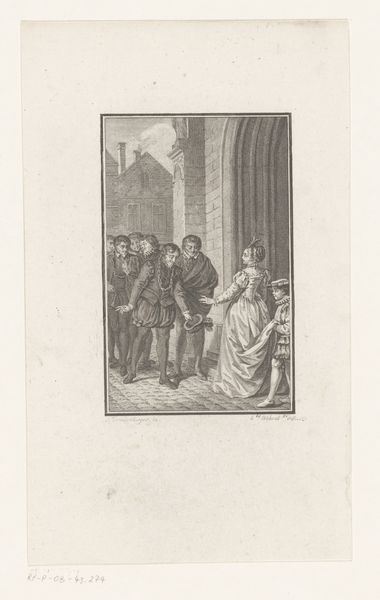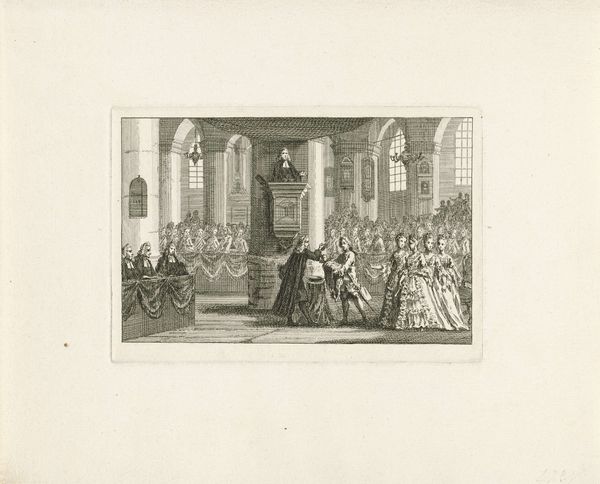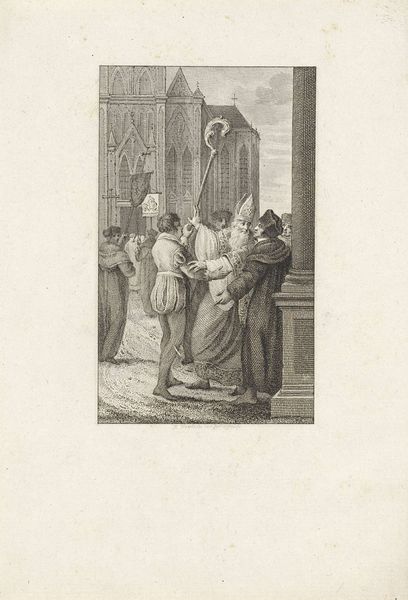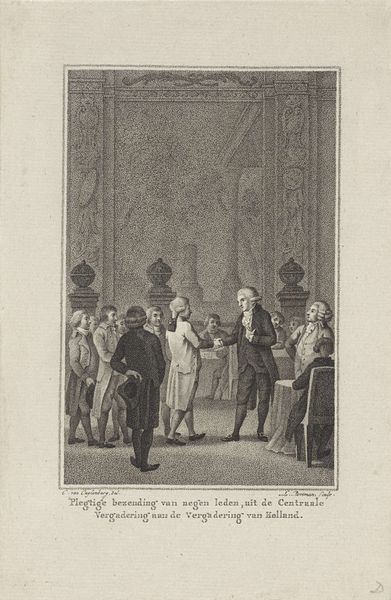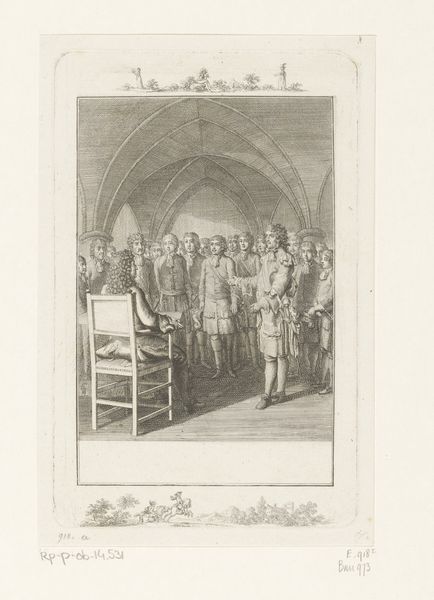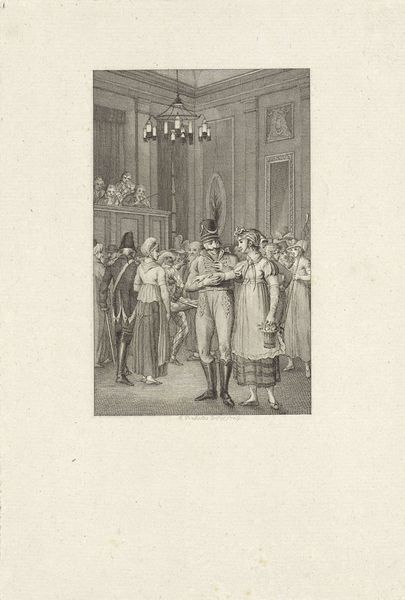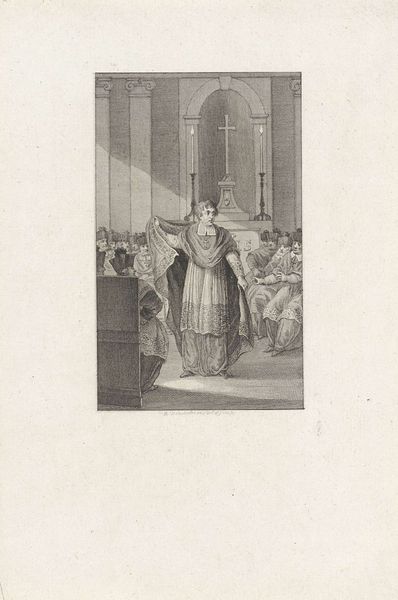
Aankomst van Willem I Frederik, koning der Nederlanden in Den Haag, 1813 1829
0:00
0:00
engraving
#
portrait
#
neoclacissism
#
history-painting
#
engraving
Dimensions: height 251 mm, width 150 mm
Copyright: Rijks Museum: Open Domain
Editor: Here we have Philippus Velijn's "Arrival of William I Frederick, King of the Netherlands, in The Hague, 1813," an engraving created in 1829, now at the Rijksmuseum. I find the medium so interesting - the artist chose engraving rather than painting to depict such an important event. What's your take? Curator: What jumps out at me is precisely that choice of engraving. An engraving like this speaks to wider availability and consumption. Velijn wasn't necessarily aiming for unique artistic expression in the way we think of it today. The materiality of the print allowed this image, and the associated ideology, to be widely disseminated. Consider who would have been consuming these prints and why. Editor: So, it’s less about high art and more about spreading a message through accessible means? Was engraving a common way to memorialize such events? Curator: Exactly. Engraving offered reproducibility and affordability. Think about the labor involved: the engraver, the printer, the distributors, and ultimately, the consumers who purchased these images. How does that context shape your understanding of this work compared to a unique painting of the same event? The materials themselves shaped its reception and purpose. Editor: I never thought of it that way! So, it's not just about the image itself, but the entire system of production and consumption behind it? Considering the neoclacissism style, I thought of it more as high art. Curator: Absolutely! The neoclacissism and subject matter suggest high art aspirations, but the choice of engraving complicates that. Think about the social context and the intended audience. The materiality democratized the image while still conveying a specific political narrative. Editor: That’s fascinating. Looking at it now, the engraving really highlights the mass dissemination aspect. Curator: Precisely. Examining the means of production offers insights beyond simply aesthetic appreciation. Editor: I see. This makes me want to look at other historical engravings, too, not just for what they depict, but for what their production tells us. Curator: Excellent. Now you are on your way to understanding art in its historical, social and material context!
Comments
No comments
Be the first to comment and join the conversation on the ultimate creative platform.

